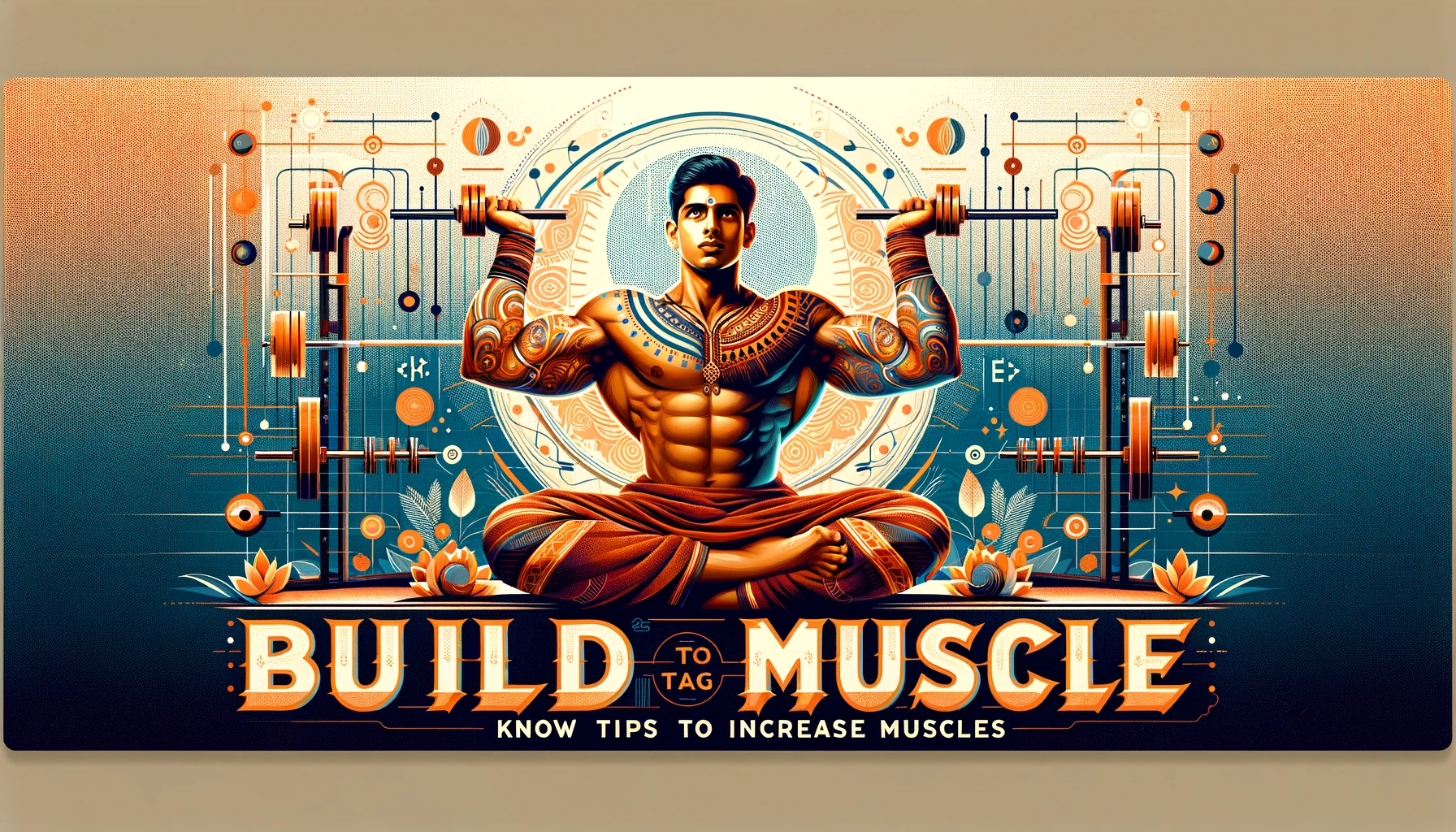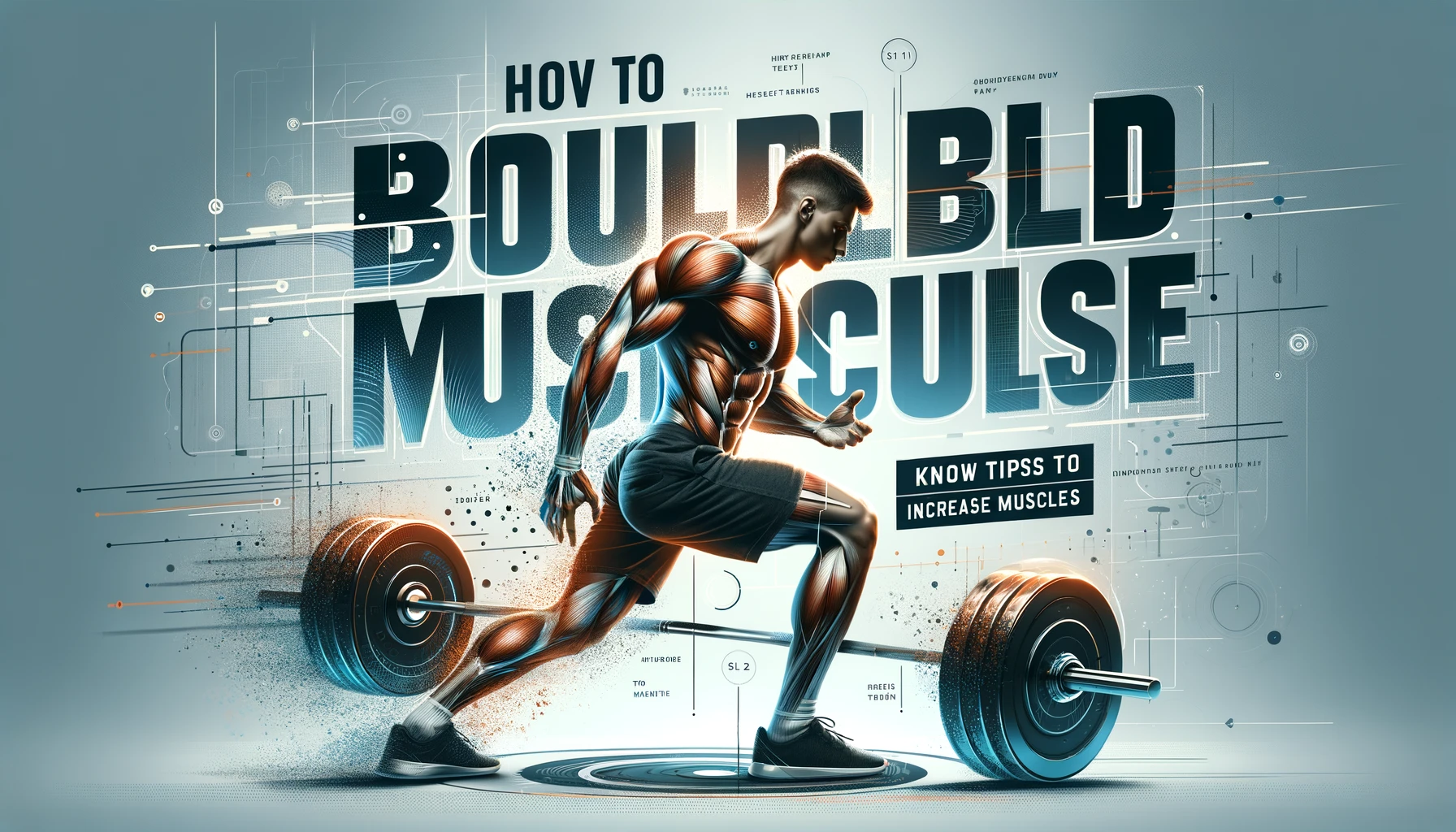
Building muscle is a goal sought by many for a variety of reasons, ranging from improving physical appearance to enhancing athletic performance and boosting overall health. Understanding the basic principles behind muscle growth is essential to effectively achieve and sustain gains. This introductory section will provide a broad overview of the key components involved in muscle development, including the physiological process of muscle hypertrophy, basic nutritional needs, and foundational training concepts.
Reasons to Build Muscle
People are motivated to build muscle for several reasons, such as increasing strength, improving body composition, and enhancing metabolic health. For athletes, muscle mass can contribute to better performance in virtually any sport. Off the field, increased muscle mass is linked with improvements in daily functional movements and potentially longer life expectancy. Understanding these benefits can provide the necessary motivation and set a clear purpose for embarking on a muscle-building journey.
Key Components to Successful Muscle Growth
Successful muscle building hinges on three primary factors: consistent strength training, proper nutrition, and adequate rest. Each component plays a pivotal role. Strength training provides the stimulus for muscles to grow, nutrition supplies the building blocks necessary for tissue repair and growth, and rest allows for recovery and hypertrophy to occur. This subsection breaks down these components to give an initial understanding of what is needed to start building muscle effectively and safely.
Understanding the Basics of Muscle Growth | How to build muscle tag
Muscle growth, or hypertrophy, is a complex process that involves more than just lifting weights. It is essential to understand the biological mechanisms that contribute to muscle development to effectively enhance muscle size and strength. This section delves into the fundamentals of muscle growth, emphasizing the role of muscle fibers, hormonal influences, and the critical recovery period.

The Role of Muscle Fibers
Muscle growth primarily involves the adaptation of muscle fibers to stress. When you engage in strength training, you create microscopic tears in the muscle fibers, known as muscle damage. In response, your body begins a repair process where these fibers are fused, leading to an increase in muscle size and strength. The type of fiber affected largely determines the nature of the muscle growth, with type II fibers (fast-twitch) being more susceptible to growth through activities such as weightlifting and sprinting.
Hormonal Influences on Muscle Growth
The body’s hormonal environment plays a crucial role in muscle building. Testosterone and growth hormone are particularly significant, as they are directly involved in the muscle repair and building process. While testosterone increases protein synthesis and inhibits protein breakdown, growth hormone promotes tissue growth and muscle recovery. Both hormones surge during and after workouts, emphasizing the importance of not only the training itself but also proper post-workout recovery and nutrition strategies.
Importance of Recovery
Recovery is as vital as the workout itself in the muscle-building equation. During recovery, the body repairs the microscopic tears in the muscle fibers, leading to muscle growth. Critical components of effective recovery include adequate sleep, proper nutrition, and hydration. Neglecting recovery can lead to overtraining, where muscle breakdown occurs faster than repair, ultimately hindering muscle growth. Thus, balancing training with adequate rest and nutritional support is essential for optimal muscle development.

Essential Nutrition for Muscle Gain
Nutrition plays a pivotal role in the success of any muscle-building program. For effective muscle gain, a well-planned diet is as crucial as the workout itself. This section delves into the core nutritional strategies that enable optimal muscle growth and recovery.
Macronutrients for Muscle Growth
The foundation of muscle-building nutrition revolves around three key macronutrients: proteins, carbohydrates, and fats. Proteins are the building blocks of muscle and are essential for repair and growth. Aim to consume high-quality protein sources such as chicken, beef, fish, and plant-based options like lentils and chickpeas. Carbohydrates fuel your workouts and assist in recovery, while healthy fats are crucial for hormonal functions that aid muscle growth. Understand the right balance of these macronutrients to maximize your gains.
Micronutrients and Hydration
While macronutrients get most of the spotlight in muscle gain, micronutrients and hydration are equally important. Vitamins and minerals from fruits, vegetables, and supplements support bodily functions necessary for muscle performance and recovery. Calcium, magnesium, and potassium promote muscle contraction and relaxation. Additionally, staying hydrated is essential as it influences every metabolic process in the body, including protein synthesis.
Strategic Meal Timing
Optimizing the timing of your meals can significantly enhance muscle growth. Consuming the right nutrients at the right times, particularly around your workouts, can improve both performance and recovery. A pre-workout meal should include carbohydrates and proteins to fuel your session, while your post-workout meal should focus on proteins and some carbohydrates to aid in recovery. Implementing a nutritional strategy that aligns with your workout regimen will help you see tangible results faster.
The Best Exercises for Building Muscle

Strength training is fundamental in any muscle building regimen. Identifying the most effective exercises is crucial for maximizing muscle growth and enhancing overall fitness. This section delves into the top exercises known to be the pillars of muscle development, targeting key muscle groups for balanced growth and strength.
Compound Movements
Compound movements involve multiple joints and muscle groups, making them incredibly efficient for building muscle. The squat, deadlift, and bench press are the core exercises in this category. These lifts not only enhance muscle mass but also improve metabolic rate and hormonal response, vital for muscle growth. Incorporating these into your routine ensures comprehensive strength and muscle gains across the body.
Isolation Exercises
While compound exercises build overall strength and size, isolation exercises focus on specific muscle groups. This includes movements like the bicep curl and tricep extension. Utilizing isolation exercises after compound movements can help in targeting any lingering muscle groups that need additional work, ensuring a balanced and thorough muscle building workout.
Progressive Overload
For continuous muscle growth, progressive overload is essential. This concept involves gradually increasing the weight, frequency, or number of repetitions in your exercises as your strength improves. This challenge is crucial as it forces your muscles to adapt and grow. Regularly updating your exercise regimen according to your current strength levels will promote sustained growth and prevent plateaus.
Designing Your Muscle Building Workout Routine
Designing an effective muscle building workout routine is crucial for both beginners and experienced fitness enthusiasts. It involves a strategic combination of various exercise types, intensity levels, and recovery periods to maximize muscle growth and strength. A well-designed routine not only focuses on specific muscle groups but also incorporates overall body movements to enhance stamina and reduce the risk of injuries.
Establishing Workout Frequency and Duration
The frequency and duration of workouts play a pivotal role in muscle development. Ideally, aim for 3 to 5 sessions per week, each lasting about 45 to 60 minutes. This balance allows ample time for muscle recovery, which is as important as the workout itself. Beginners should start with fewer sessions and gradually increase frequency and duration based on their adaptation and improvement over time.
Choosing the Right Exercises
Selecting the right exercises is fundamental to effectively target and stimulate muscle growth. Incorporate a mix of compound movements (like squats, deadlifts, and bench presses) that work multiple muscle groups, and isolation exercises (such as bicep curls and tricep extensions) to focus on specific muscles. This variety ensures comprehensive muscle development and helps avoid muscle imbalances.
Structuring Workouts for Optimal Results
Structure your workouts to include a warm-up, main exercise sets, and a cool-down to prevent injuries and promote muscle recovery. Start with lighter weights to build muscle endurance, and progressively increase the weight or resistance to enhance muscle growth. Incorporate periodization by varying the workout intensity and volume over time, which can help overcome plateaus and continuously challenge the muscles.

Muscle Building for Beginners: Tips and Strategies
Starting a muscle-building regimen can be a daunting endeavor for beginners. Key to success in your fitness journey is understanding the foundational principles of effective strength training. **Muscle Building for Beginners: Tips and Strategies** covers essential aspects that every novice should know to set a strong foundation for their muscle growth and overall fitness. This section is designed to guide you through various facets of beginning your muscle-building journey, ensuring you undertake this path with confidence and knowledge.
Understanding Your Body Type
Recognizing your body type is crucial as it influences how you respond to diet and training. Typically, body types are categorized into ectomorphs (lean and tall, difficulty gaining weight), mesomorphs (naturally muscular and well-built), and endomorphs (tends to gain weight easily, both muscle and fat). Tailoring your diet and exercise routine to suit your body type can dramatically improve your results. For instance, ectomorphs may need more calories and fewer cardio workouts, whereas endomorphs might benefit from a higher protein intake and more frequent cardio.
Setting Realistic Goals
It’s vital for beginners to set realistic and achievable goals. Short-term goals act as motivating milestones, while long-term goals keep your eyes on the ultimate prize. Start with simple objectives like improving your strength in basic exercises such as squats, bench presses, and deadlifts. Incremental increases in resistance and intensity can lead to substantial improvements over time. Remember, consistent small steps lead to massive gains.
Importance of Nutrition
Nutrition plays a pivotal role in muscle building. A beginner should focus on a balanced diet rich in proteins, good fats, and carbohydrates. Proteins are the building blocks of muscle and are essential for muscle repair and growth. Carbohydrates provide the energy needed for intense workouts, while fats are necessary for hormonal functions, including those related to muscle growth. Tracking your intake and ensuring you consume enough calories and nutrients can help maximize your muscle-building potential.
Beginning Your Training Regimen
Embarking on your muscle-building journey involves starting with fundamental exercises that recruit multiple muscle groups, known as compound movements. Exercises like squats, deadlifts, and bench presses not only enhance muscle mass but also teach you proper form and body mechanics. It is advisable to start with lighter weights to focus on form and to prevent injuries. Gradually increase the weight as your strength improves, ensuring continuous muscle growth and adaptation.
Overcoming Plateaus in Muscle Growth
Reaching a plateau in muscle growth is a common challenge for many athletes and fitness enthusiasts. Despite consistent efforts and dedication to training, progress can halt unexpectedly. This section will explore strategies to overcome these frustrating standstills and continue advancing towards your muscle-building goals. Understanding the causes and implementing effective solutions are critical in pushing past a plateau.
Identifying Signs of a Plateau
Recognizing the signs of a plateau is crucial to address it effectively. Common indicators include a noticeable lack of progress in strength, no increase in muscle size, and a feeling of stagnation despite ongoing efforts. Feeling unusually fatigued and a decrease in performance can also signify that you’ve hit a plateau. Once these signs are identified, you can take specific steps to modify your regimen and stimulate further growth.
Adjusting Your Training Regimen
To break through a plateau, consider altering your training regimen. Introducing new exercises, adjusting the intensity, or changing the volume and frequency of workouts can provide new stimuli for muscle growth. Additionally, it is essential to ensure that your body has adequate recovery time to repair and grow stronger. Sometimes, simply varying the order of exercises or incorporating different training styles like supersets or drop sets can reignite progress.
Revising Nutritional Intake
Proper nutrition is paramount in overcoming a plateau. A common mistake is not consuming enough calories or macro-nutrients to support increased muscle demands. Evaluating and potentially increasing your intake of proteins, fats, and carbohydrates might be necessary. Supplements such as creatine, protein powders, and BCAAs can also play a beneficial role in providing the necessary nutrients to fuel muscle growth and recovery.
Incorporating Rest and Recovery
Often underestimated, adequate rest and recovery are essential in surpassing a muscle-building plateau. Overtraining can lead to a plateau as much as undertraining. Ensuring you get enough sleep, managing stress levels, and including active recovery days in your routine can help your muscles repair and grow stronger, readying them for more intense training sessions. Remember, muscle growth occurs outside the gym as much as within.
By addressing each aspect of your training, nutrition, and recovery strategies, you can effectively overcome plateaus and continue making significant gains in muscle growth.” ”
Advanced Techniques and Tips for Experienced Bodybuilders
For those who have surpassed the beginner and intermediate stages of bodybuilding, adopting advanced techniques can push your muscular development to new heights. Experienced bodybuilders must focus on overcoming their body’s adaptation to regular workouts and seek innovative strategies to continue making significant gains. This section delves into complex training protocols and refined nutritional tactics that target optimal muscle hypertrophy and strength gains.
Advanced Training Methods
To elevate muscle growth, incorporating advanced training methods such as drop sets, supersets, and eccentric overload can be highly effective. Drop sets involve continuing an exercise with a lower weight once muscle failure has been reached at a higher weight. Supersets combine two exercises performed back-to-back with no rest, which intensifies the workout and increases muscle tear and repair. Eccentric training focuses on slowing down the elongation phase of the muscle contraction, significantly increasing muscle stress and, consequently, muscle repair and growth.
How to build muscle know tips to increase muscles | Refined Nutritional Strategies
At the advanced stages of bodybuilding, nutrition becomes even more critical. Precision in macronutrient intake and timing can profoundly impact muscle gains and recovery. Experienced bodybuilders should consider incorporating periodized nutrition, aligning their carbohydrate, protein, and fat intake with their training phases. Additionally, the strategic use of supplements such as creatine, beta-alanine, and branched-chain amino acids (BCAAs) in conjunction with a well-timed diet can enhance performance and growth significantly.
Recovery Techniques
Recovery is paramount for any bodybuilder, but at the advanced level, optimizing recovery processes is a necessity to continue progressing. Techniques such as active recovery workouts, advanced stretching routines, and strategic rest days are essential. Additionally, incorporating modern recovery tools like cryotherapy, compression garments, and targeted massage therapies can further enhance muscle recuperation, allowing for increased frequency and intensity in training sessions.
